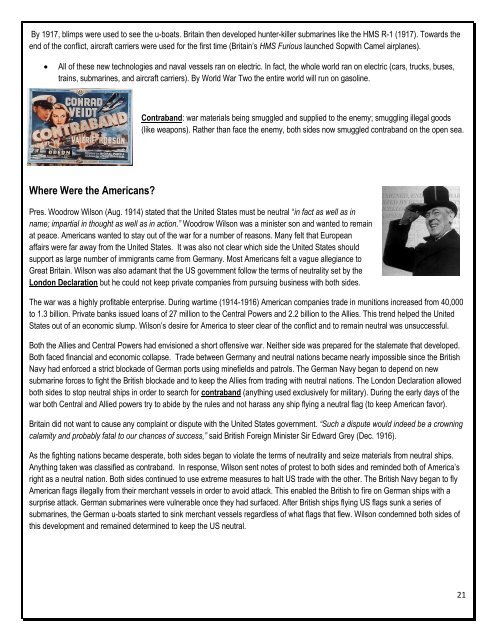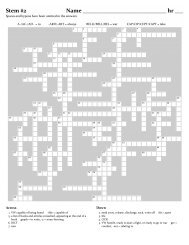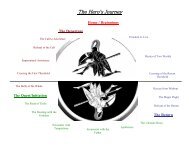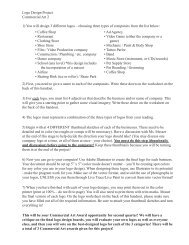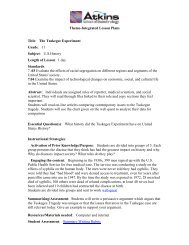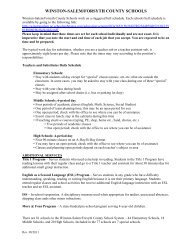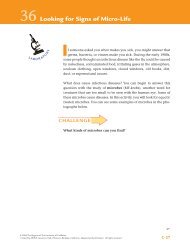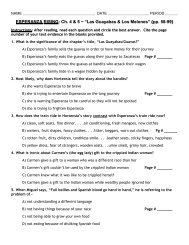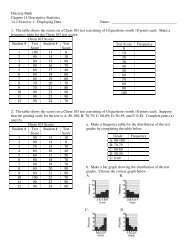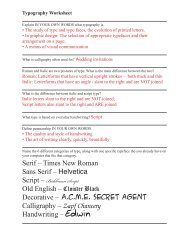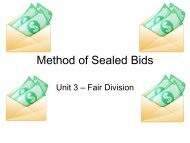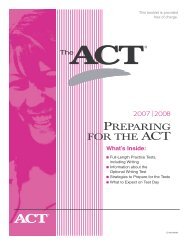World War One
World War One
World War One
- No tags were found...
Create successful ePaper yourself
Turn your PDF publications into a flip-book with our unique Google optimized e-Paper software.
By 1917, blimps were used to see the u-boats. Britain then developed hunter-killer submarines like the HMS R-1 (1917). Towards theend of the conflict, aircraft carriers were used for the first time (Britain’s HMS Furious launched Sopwith Camel airplanes).All of these new technologies and naval vessels ran on electric. In fact, the whole world ran on electric (cars, trucks, buses,trains, submarines, and aircraft carriers). By <strong>World</strong> <strong>War</strong> Two the entire world will run on gasoline.Contraband: war materials being smuggled and supplied to the enemy; smuggling illegal goods(like weapons). Rather than face the enemy, both sides now smuggled contraband on the open sea.Where Were the Americans?Pres. Woodrow Wilson (Aug. 1914) stated that the United States must be neutral “in fact as well as inname; impartial in thought as well as in action.” Woodrow Wilson was a minister son and wanted to remainat peace. Americans wanted to stay out of the war for a number of reasons. Many felt that Europeanaffairs were far away from the United States. It was also not clear which side the United States shouldsupport as large number of immigrants came from Germany. Most Americans felt a vague allegiance toGreat Britain. Wilson was also adamant that the US government follow the terms of neutrality set by theLondon Declaration but he could not keep private companies from pursuing business with both sides.The war was a highly profitable enterprise. During wartime (1914-1916) American companies trade in munitions increased from 40,000to 1.3 billion. Private banks issued loans of 27 million to the Central Powers and 2.2 billion to the Allies. This trend helped the UnitedStates out of an economic slump. Wilson’s desire for America to steer clear of the conflict and to remain neutral was unsuccessful.Both the Allies and Central Powers had envisioned a short offensive war. Neither side was prepared for the stalemate that developed.Both faced financial and economic collapse. Trade between Germany and neutral nations became nearly impossible since the BritishNavy had enforced a strict blockade of German ports using minefields and patrols. The German Navy began to depend on newsubmarine forces to fight the British blockade and to keep the Allies from trading with neutral nations. The London Declaration allowedboth sides to stop neutral ships in order to search for contraband (anything used exclusively for military). During the early days of thewar both Central and Allied powers try to abide by the rules and not harass any ship flying a neutral flag (to keep American favor).Britain did not want to cause any complaint or dispute with the United States government. “Such a dispute would indeed be a crowningcalamity and probably fatal to our chances of success,” said British Foreign Minister Sir Edward Grey (Dec. 1916).As the fighting nations became desperate, both sides began to violate the terms of neutrality and seize materials from neutral ships.Anything taken was classified as contraband. In response, Wilson sent notes of protest to both sides and reminded both of America’sright as a neutral nation. Both sides continued to use extreme measures to halt US trade with the other. The British Navy began to flyAmerican flags illegally from their merchant vessels in order to avoid attack. This enabled the British to fire on German ships with asurprise attack. German submarines were vulnerable once they had surfaced. After British ships flying US flags sunk a series ofsubmarines, the German u-boats started to sink merchant vessels regardless of what flags that flew. Wilson condemned both sides ofthis development and remained determined to keep the US neutral.21


